Debunking Mystical Famous Landmarks In The British Isles
By Thessa Lageman | Published on April 25, 2022
Standing in the middle of the vast fields of the British countryside, far off in the distance, I could see the massive stones of this prehistoric cultural icon. I started my trip to visit the United Kingdom at Stonehenge, one of the most famous landmarks in the British Isles.
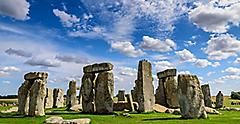
Aliens, Gods, Or Giants? Why Was Stonehenge Built?
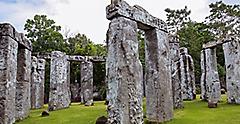
Walking around the massive stones, I naturally started to wonder — as visitors and researchers have done for centuries — why was Stonehenge built, and how did people manage to put these huge stones here, over 5,000 years ago?
When you're confronted with the sheer size of these stones, it seems impossible humans could have pulled this off, especially without any modern equipment. It's perhaps no surprise that for a long time, people thought the builders may have been giants or gods with extraordinary powers.
Theories about Stonehenge are as old as the stones themselves, and many theories are drawn from classic folklore. One of the earliest legends surrounding Stonehenge involves Merlin the wizard. The legend goes that when British nobles and soldiers died in battle against the Saxons, they were buried on Salisbury Plain, which is now the site of Stonehenge. King Arthur wanted to erect a memorial to the soldiers, and specifically wanted these ancient stones that stood in Ireland and were said to be built by giants. He believed the stones to hold magical powers and was desperate to use them in his memorial. So, he enlisted the magical Merlin to go to Ireland and transport the stones to Salisbury Plain. Though compelling, this legend was later debunked. Aside from it being a fantastical story, historians realized the timeline doesn't match up — Stonehenge has stood in the British Isles for centuries before.
Whimsical stories about Stonehenge still live on through to the modern-day. In the book "Chariots of the Gods?" Swiss author Erich von Däniken claimed the monument was constructed by the same aliens who built the pyramids — an idea that became rather popular during the conspiracy boom of the 1960s and is still believed by some today in the 21st century.
Book Now
Celebrate The Solstice As You Travel To Stonehenge

Even if it did not come from outer space, Stonehenge is an otherworldly place. Though these legends are fun to read about, scientists have demonstrated that the original builders actually had the necessary technologies to build the structure, even though the wheel was not yet used in Britain. Little is known about who built Stonehenge to this day, but there is undoubtedly a deep meaning behind the stones. It's clear the builders kept an eye on the heavens, as the stones are aligned with the longest and shortest days of the year.
Many researchers presume this world-famous Neolithic monument served as a sun temple because the center stones are carefully aligned with the movements of the sun. Ancient astronomers may have used Stonehenge as a solar calendar to keep track of the movement of the sun and moon, to mark the changing seasons. Others believe the site was used to worship ancestors, and burial mounds have been uncovered nearby. From what I learned on my visit to Stonehenge, both theories seem plausible. I plan to return one day to join the celebrations for the solstice and find out for myself.
The Energy Of Avebury Stone Circle

Before my trip, I had read about the many other extraordinary mythical marvels in the United Kingdom, and after my visit to Stonehenge, I decided to drive 30 minutes to the close but lesser-known Avebury Stone Circle. Here, I was awed to find the largest Neolithic stone circle in Britain and the world — making Stonehenge look small. Originally made of about 100 stones, today, only around 30 stones remain.
Over the centuries, folklore sang the praises of the stones' alleged powers. The stones at Avebury are believed to have healing properties, so people come here to hug the stones. However, our guide told us stories of bad luck and devils. The townsfolk used to believe the stones could summon the devil. According to legend, running around the massive Devil's Chair stone counterclockwise 100 times will bring him out. While I didn't meet the devil on my trip to Avebury, the area did evoke the energy of something bigger than us.
Bathe Like The Ancient Romans
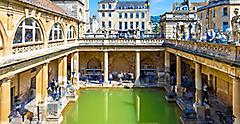
Next, I continued on to the picturesque city of Bath, just 55 kilometers away from Stonehenge. Here, I visited The Roman Baths, one of Northern Europe's most impressive Roman sites.
The spa complex was built in 70 A.D. but was destroyed at the fall of the Roman Empire and redeveloped in the Middle Ages. The buildings include a bathhouse complex and a temple dedicated to the healing goddess Sulis Minerva. The legend of the bathhouses, my guide told me, revolves around King Blaudud's son, who claimed that the hot mineral springs cured his leprosy, leading many to flock there in search of its mystical powers.
The Ancient Romans used the 115°F (46°C) hot springs as public baths to cure ailments from achy muscles to skin issues. Unfortunately, you can't relax in the ancient spa as the Romans did, but there is now a museum that displays fascinating artifacts, such as the gilded bronze head of Minerva and thousands of Roman coins.
The nearby Thermae Spa complex is a great modern alternative. While the hot springs may not cure what ails you, you'll be sure to enjoy the naturally heated, mineral-rich waters and open-air rooftop pool.
Historic Tourism: Walk In The Romans' Footsteps
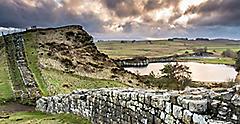
Completely revived after my spa break, I traveled north to follow the Romans' footsteps to another iconic monument from the same time: Hadrian's Wall. Roman emperor Hadrian ordered the construction, which took place between 117 and 138 A.D., and the wall served as a defense line at the northern border of the Roman Empire. Contrary to popular belief, the wall is not the definitive border between England and Scotland. Many have theorized the construction of the wall was to divide the two, but this has been proven false, as the two regions didn't exist when Hadrian's Wall was built.
The intrigue behind Hadrian's Wall is just how it managed to survive for so long. Many stones that were once part of the wall were later used by the local population to build their houses. However, a large part of the wall is still intact, mostly the middle of it. The wall once included 16 forts, and a few remains can still be visited, like Chesters Roman Fort. The fort is a well-preserved cavalry fort, and the intact bathtubs and steam rooms are a sight to behold. Today, artifacts are still frequently found along Hadrian's Wall that give us a glimpse into ancient Roman life.
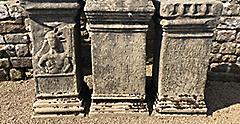
More Medieval Marvels To Visit On Vacation
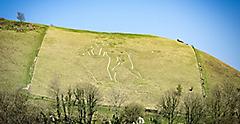
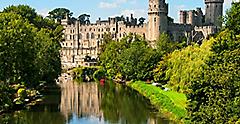
My last stop on vacation was Warwick Castle, on the banks of the River Avon in Warwickshire, England. Originally an Anglo-Saxon fortification, it's one of Britain's finest medieval fortresses. I was fascinated by the idea of staying the night in the castle and was so excited to book a room inside the 14th century Caesar's Tower.
I stayed in a lavishly decorated medieval-style suite with the original high-vaulted ceiling, and the experience was something truly special. "Keep an eye out for the ghostly figure of a black dog with red eyes," I was warned. The dog is allegedly spotted by visitors on the property and is said to have been cursed by Moll Bloxham, a woman publicly punished for stealing in the town. Another famous ghost is that of Sir Fulke Greville, who was stabbed by his servant, and according to some, his moans can still be heard in the South Tower. Despite the warnings of the castle being haunted, I had one of the best nights of sleep of my life.
As I reflected on my vacation trip through the famous landmarks in the British Isles, I know one thing is for sure: This corner of the world is steeped in rich history and wonder. Maybe aliens didn't build Stonehenge, and perhaps spirits don't skulk around the halls of Warwick Castle, but Britain is a mysterious land worth seeing, and who knows, you may just end up believing.





